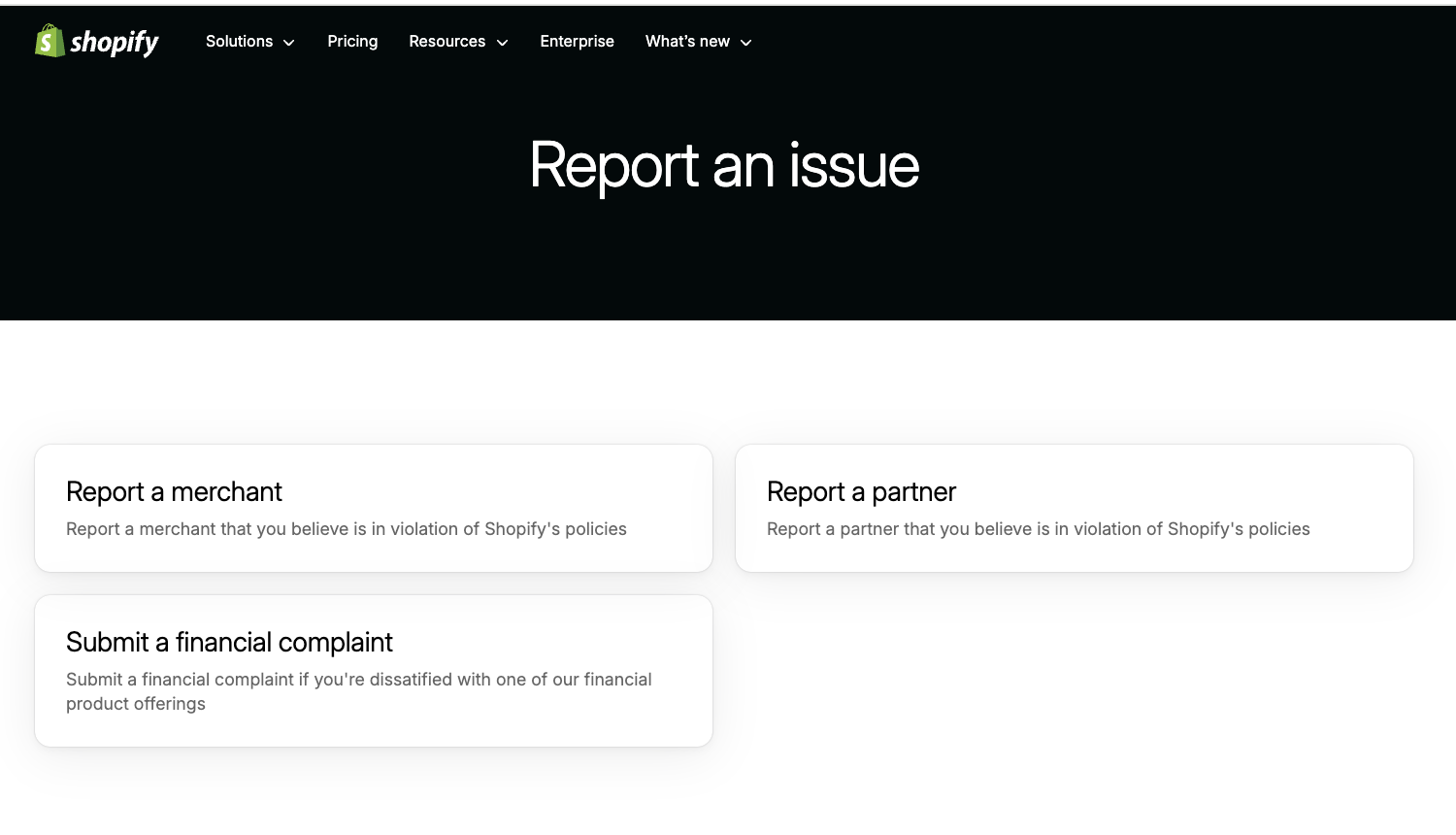With over $2 billion in revenue in Q1 2025 alone, Shopify has cemented itself as one of the leading SaaS e-commerce platforms worldwide, empowering entrepreneurs and major retailers alike to build custom online storefronts. Whether you’re a side-hustler launching your first product line or a global brand managing high-volume sales, Shopify offers scalable tools to get you selling fast.
But speed and simplicity come at a cost: the very features that make Shopify so appealing to legitimate businesses are also being exploited by bad actors.
Fake Shopify stores are popping up faster than ever, posing as real brands, deceiving customers, and stealing revenue from legitimate businesses. If your brand is being impersonated, it’s critical to act fast.
Here’s how Shopify works, how scammers abuse it, and what brand owners can do to fight back.
What Is Shopify, and How Does It Work?
Shopify is a cloud-based e-commerce platform that allows anyone to create an online store in minutes.
With Shopify, merchants can customize storefronts using branded themes and third-party apps, manage customer data, use built-in point-of-sale (POS) functionality for in-store purchases, and access a suite of analytics, marketing tools, and payment gateways….all from a single platform.
Its intuitive dashboard, mobile app access, and extensive developer ecosystem have made Shopify a go-to platform for millions of businesses, but the ease of setup also lowers the barrier for counterfeiters. Fake stores can be spun up with almost no effort, scraping content from real brand websites and mimicking authentic logos and images with alarming accuracy.
The Rise of Scam Shopify Stores
Fake Shopify stores are a growing threat across the e-commerce ecosystem. These stores often look polished on the surface but are designed to deceive. Some common warning signs include:
- Domains: Using URLs that are just “brand name + country” (ie, nikekorea.com), that use foreign characters that look like English to infringe without detection, or that are just a string of random letters.
- Unrealistic Discounts: Offering deep discounts that would be impossible for legitimate retailers with production and logistics costs (ex. free shipping from China).
- Social Media & Customer Reviews: Watch out for social media accounts with fewer than three posts or little to no genuine engagement. Additionally, while the comment section can offer clues, be cautious: scammers frequently use bots to flood posts with fake praise and are quick to delete any negative feedback or warnings from real users.
- No Contact Info: Missing addresses, broken email links, and no phone numbers.
These scams damage brand reputation and cut into revenue, snowballing into a serious issue before the brand even becomes aware. Customers hold the real brand accountable when orders never arrive or when poor-quality knockoffs show up at their door, leading to legal and reputational troubles alike. Even worse, traffic that should be driving sales on your official site is instead being rerouted to the fake sellers, draining possible revenue opportunities.
How to Report a Shopify Store
If you suspect that a Shopify store is infringing on your brand, follow these steps to report it:
- Gather Evidence. Collect all relevant proof of infringement, including:
- Screenshots of the store
- Product listings that use your IP
- URLs, order confirmations, or customer complaints
- Any correspondence with the store
- Go to the Shopify Help Center. Navigate to the “Report a Merchant” section.
- Fill Out the Report Form. Choose the relevant type of violation: trademark infringement, copyright infringement, spam, etc. Be as specific as possible. Include any relevant IP registrations (trademarks, copyrights), examples of infringement, and details about the unauthorized use.

- Submit the Report. Shopify will confirm receipt of your complaint and investigate the issue. If your claim is verified, Shopify may remove the listing, take down the store, or ask for additional documentation.
What Happens After You Report?
Shopify has clear policies against selling counterfeit goods and infringing on intellectual property. When reports are submitted with strong supporting evidence, Shopify typically takes action within a few days.
However, that doesn’t mean the problem is gone for good.
Fighting Back: How Brands Can Scale Their Protection
The reality is that manual enforcement alone isn’t enough anymore. Many infringers use automation to spin up new stores within hours of a takedown, leaving your brand to play a game of digital whack-a-mole. This leaves brand owners stuck in a reactive loop, constantly monitoring for new abuses.
That’s where MarqVision comes in. Our AI-powered platform automates the detection and takedown of counterfeit listings across e-commerce platforms, including Shopify, Amazon, and beyond. Instead of spending hours combing through scam sites and submitting reports manually, your team can focus on higher-level strategy while we handle the enforcement.
If your brand is being targeted by fake Shopify stores, don’t wait for the damage to escalate. Report them. Take action. And consider a long-term solution to stay ahead of the curve.
Ready to protect your brand at scale?
Book a demo with MarqVision to see how we can help you identify, report, and remove counterfeit Shopify stores – before they hurt your brand.
4 Enforcements a Week to 400: Scale Brand Safety with Marq AI

Don’t Just Find Counterfeits. Dismantle the Entire Network.

.png)
Discover the latest trends and challenges in IP protection

Take Control of Your Trademarks with MARQ Folio

Renew and Manage Your Trademarks Easily With MARQ Folio

We’re waiting to hear from you

See the best brand protection solution in action

Don’t let piracy steal your growth

Talk to us about your brand protection problems

Put an end to impersonating websites
Subscribe to our newsletter
Stay up to date on the latest IP Protection content from MarqVision.









